- By Sherryl Connelly
New York Daily News—-
In 1980, when Bob Marley performed over two triumphant nights at Madison Square Garden, he shared the stage with soldiers from the Gambino crime family.

The reggae legend, who still carried a failed assassin’s bullet in his arm, hired the mobsters as protection against hit squads from his native Jamaica.
The dreadlocked icon’s dire security measures are revealed in a new book, “So Much Things to Say,” an oral history compiled by dedicated Marley historian Roger Steffens.
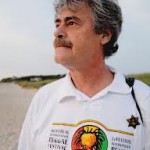
That September, Bob Marley & the Wailers brought the hugely successful “Uprising” tour to New York for its penultimate stop.
The tour had made Marley a superstar, even though the headliners were the hit-making Commodores with lead vocalist Lionel Richie. But Marley had other non-musical concerns, and he took charge of those matters himself. He was seen with Vivian Blake, head of the notoriously violent Shower Posse gang, said to be responsible for more than 1,400 murders.
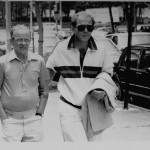
He settled instead on the Gambino family, making arrangements with the late Joe (Piney) Armone at the not-yet-legendary Sparks Steak House. Five years later, family boss Paul Castellano was whacked on the street outside.
Marley’s Garden concerts were such blazing events that much of the crowd departed when the Wailers did, leaving the Commodores to play for a far less than full house.
The next day, Marley learned the killer was actually inside him. Jogging to a soccer scrimmage in Central Park, he suffered a seizure. The treatment he’d previously undergone for melanoma had failed. The cancer was back — with no hope of recovery.
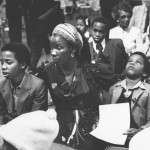
Marley’s fear of a bullet was more than justified. A would-be killer had already come for him once.
In 1976, a wildly anticipated Wailers concert in Kingston, Jamaica, was overtaken by near-lethal political controversy.
An election was in the offing, rancorously pitting the People’s National Party (PNP) against the Jamaican Labor Party (JLP). Marley was seen as falling into the PNP camp — not necessarily a safe place.
On Dec. 3, two days before the concert, everyone was holed up at Tuff Gong house, a sprawling old tropical mansion colonized by Marley as a musicians’ hang.
Suddenly, two white Datsuns barreled through the iron gates into a concrete yard mysteriously emptied of guards. Bob’s wife Rita was the first victim, shot in the head as she was leaving.
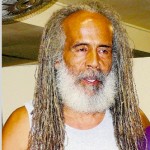
Marley, taking a break during a rehearsal of “I Shot the Sheriff,” had wandered off to the kitchen. The Wailers saw only a hand holding a .38 come around the door moments before the gunmen destroyed the room in a storm of bullets.
The band cowered in the bathtub, waiting to be finished off as the rampage spread throughout the rooms.
Marley was cornered with manager Don Taylor and guitarist Don Kinsey. They had nowhere to hide from the barrage of automatic gunfire.
“The firepower these guys apparently brought was immense,” says Jeff Walker, the publicist who showed up shortly after the shooting. “There were bullet holes everywhere.”
Taylor later claimed he saved Marley’s life by intentionally stepping in front of him. Others dispute the Trench Town hustler’s heroism, but his falling body may have provided some cover.
Marley was hit in the arm and the chest, but neither injury was life-threatening. When the gunfire quieted, Rita was bleeding from the head but still walking and talking, shouting for Bob.
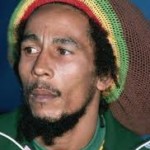
Hours later, a documentary film crew hired to record the event touched down in Kingston. Carl Colby, son of former CIA director William Colby, was part of the team.
By then, Marley was secluded in an isolated estate high in the Jamaican mountains. As the crew approached the house, Colby remembers seeing men with machetes dropping from the trees.
The reggae king was wavering until the last moment as to whether he’d take the stage. Colby says Marley didn’t make his move until a plainclothes police officer coldly said he had no choice but to play.
The waiting crowd had swollen to more than 10,000. If Marley bailed, there would be “a situation.”
Onstage, Colby recalls Marley ripping off his shirt and shouting: “They shot me here and they shot me here and they grazed me here. But they can’t stop me.”
Marley broke out into a dance.
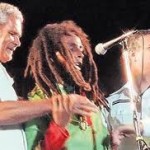
Colby was outraged to learn decades later his name had frequently surfaced in the swirl of theories after the shooting. He’d firmly turned his back on the covert life.
Other fingers pointed to Taylor, who had a ruinous gambling habit, as the intended target. The Wailers’ personal manager, Allan (Skill) Cole, was also a possibility. Rumor had it that he’d fixed a horse race.
But one of the shooters, identified by several witnesses, was Jim Brown, a notorious JLP enforcer.
“A longtime bad man,” as one of Marley’s crowd puts it.
Steffens concludes the “forces of the JLP came together to kill Bob Marley,” but notes there’s no evidence that leader Edward Seaga was aware of the plot.
Marley never stopped wondering. Keyboardist Pablove Black said afterward that any sound outside could send Marley into a dark funk.
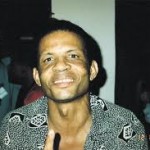
Marley’s death gave birth to a growing legend. That Marley is fifth on the Forbes list of top-earning dead celebrities is one indication. That more than 500 books have been written about him is another.
But the best is this: Marley brought reggae to the world, and the world is still listening.


You must log in to post a comment.